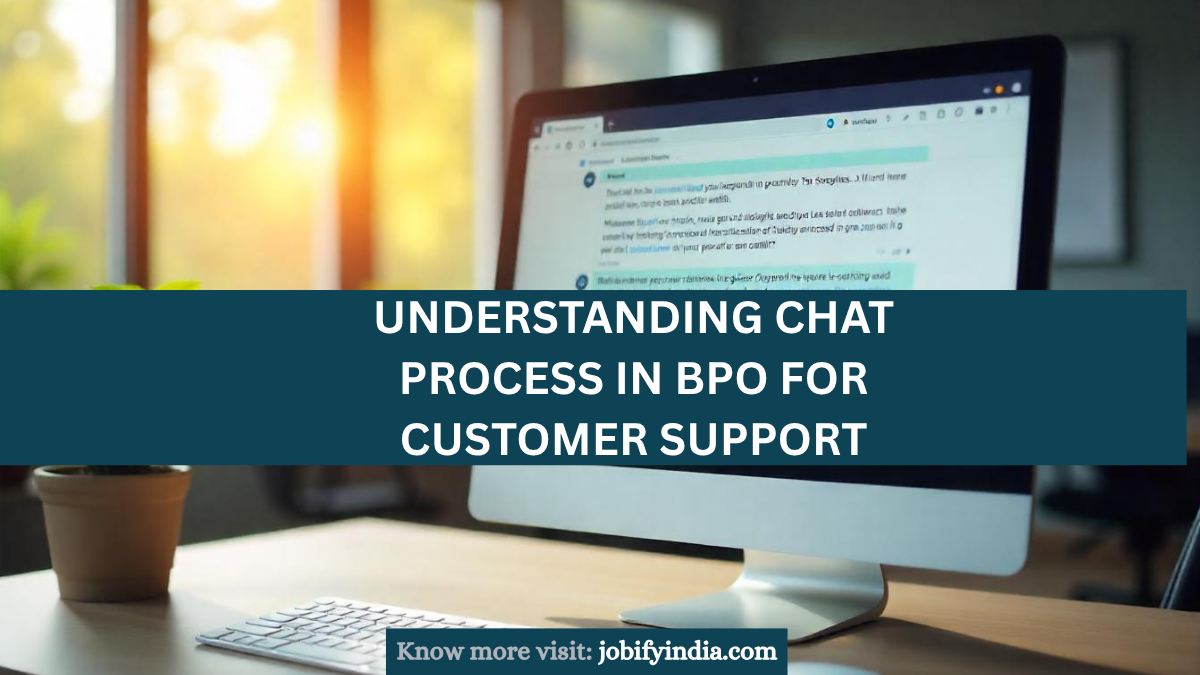The chat process in BPO has revolutionized how companies deliver real-time customer support—offering fast, accessible service without the need for phone calls or emails.
Whether you’re asking about an order, resetting a password, or navigating a product page, live chat is often the first (and fastest) way to get help. In fact, according to Zendesk, customers who use live chat are 2.8 times more likely to convert than those who don’t. That’s why understanding how the chat process works in BPO is essential for modern customer experience management.
What Is a Chat Process in BPO?
In simple terms, the chat process in BPO (Business Process Outsourcing) is the use of live, web-based messaging systems to handle customer queries, complaints, or requests. These systems are managed by trained agents who work either in-house or remotely, and they interact with customers in real time via a business’s website or app.
It’s a cost-effective, customer-friendly support model that companies across eCommerce, telecom, banking, and SaaS have embraced.
Imagine visiting an online store and seeing a chat pop-up offering assistance with your purchase. That interaction is powered by a live chat agent (or a chatbot), and it’s a prime example of BPO chat support in action.
Why the Chat Process in BPO Is Gaining Popularity
The growing demand for instant answers and seamless user experiences has fueled the rise of chat support. Here’s why businesses and customers alike prefer it:
-
Faster response times: Chat often resolves issues in under a few minutes, reducing friction.
-
Multitasking: Agents can handle multiple chats at once—unlike phone support.
-
Lower operational costs: According to IBM, chat support can reduce service costs by 30% or more.
-
Convenience for users: Customers can get help while browsing, working, or commuting.
How the BPO Chat Process Works Behind the Scenes
Understanding the chat process in BPO requires looking beyond the chat window. Here’s what typically happens:
1. Initiation
A customer clicks on the chat icon or is greeted by a proactive message while browsing.
2. Routing
Based on the query type or customer history, the chat is routed to a human agent or an AI-powered chatbot for first-level assistance.
3. Engagement
The live chat agent gathers context, answers questions, resolves issues, and shares links, screenshots, or instructions as needed. Tools like Intercom enable such seamless communication.
4. Resolution
Once the problem is resolved, the chat ends, and the customer may be asked to rate the experience—providing valuable feedback.
Types of Chat Support in BPO
Different organizations implement chat in varying ways:
-
Live Chat: Direct, real-time interaction with a human agent.
-
Automated Chatbots: AI-driven bots handle FAQs and simple tasks 24/7.
-
Hybrid Chat: Combines both—bots handle basic questions and escalate complex issues to humans.
This hybrid model is becoming the norm. A Gartner report shows that by 2027, chatbots will become a primary channel for customer support in 25% of organizations.
Key Skills for Chat Process Agents in BPO
Not everyone can excel in chat support. It demands a distinct skill set:
-
Clear written communication: Every word matters in chat—there’s no tone or facial expression to rely on.
-
Speed and accuracy: Agents should type fast without compromising accuracy.
-
Product knowledge: The ability to give quick, correct answers.
-
Empathy and patience: Especially important when helping frustrated customers.
Effective chat support agents make users feel heard and understood—just as a skilled phone rep would in a voice-based BPO setting.
Benefits of the Chat Process in BPO for Businesses
1. Enhanced Customer Satisfaction
Instant help boosts customer confidence and retention. As per Forbes, 79% of customers prefer live chat because of its immediate response.
2. Higher Efficiency
With multiple chats at once, one agent can do the work of several phone operators.
3. Scalability
Chat systems are easy to scale during sales events, product launches, or peak hours—without massive infrastructure expansion.
4. Cost Reduction
Less equipment, shorter interaction times, and AI-assisted automation help reduce costs across support operations.
Challenges in Chat Support—and How to Overcome Them
While highly effective, chat support isn’t without challenges:
-
High Volume: Managing many simultaneous chats can lead to burnout.
-
Miscommunication: No vocal cues mean tone can be misunderstood.
-
Tech issues: Poor connectivity or outdated systems cause lags.
Solutions: Automate simple queries with AI, monitor agent workload, and regularly update chat scripts and tools. Use analytics to continuously refine response times and resolution quality.
Best Practices for a Smooth Chat Process in BPO
To ensure your chat support runs efficiently, here’s what top-performing teams recommend:
-
Use predefined responses for FAQs—but customize when needed.
-
Train agents on product updates and soft skills monthly.
-
Integrate CRM and helpdesk platforms to maintain full context during chats.
-
Regularly review chat transcripts to find coaching opportunities.
-
Monitor key metrics like first response time, chat duration, and customer satisfaction (CSAT) scores.
The Future of Chat in BPO
AI and automation will only deepen their role in the chat process. Expect more predictive analytics, intelligent routing, and voice-to-chat systems. However, the human touch remains irreplaceable—especially for complex or emotional issues.
The future is not about humans versus bots—it’s about bots assisting humans to serve better and faster.
Final Thoughts
Understanding the chat process in BPO gives you insights into how businesses can provide support that is not only fast and affordable but also personalized and effective. Whether you’re a customer support professional or a business leader, investing in chat support can dramatically enhance service delivery and customer satisfaction.
The next time a chat box pops up with “How can I help?”, remember: there’s an entire system—and likely a global support team—ready to make your experience smooth, helpful, and human.




